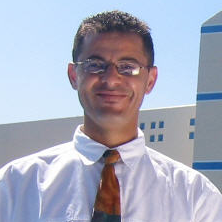Impact of Sensors in Biomechanics, Health Disease and Rehabilitation
A special issue of Sensors (ISSN 1424-8220). This special issue belongs to the section "Physical Sensors".
Deadline for manuscript submissions: closed (31 March 2022) | Viewed by 49332
Special Issue Editors
Interests: biomechanics of health disease and rehabilitation; industry engineering for medicine and high-level sport
Special Issues, Collections and Topics in MDPI journals
Interests: sport; health; disease; rehabilitation
Special Issues, Collections and Topics in MDPI journals
Special Issue Information
Dear Colleagues,
The purpose of this Special Issue is to specify and understand the impact of sensors in carrying data permitting the comprehension of human behavior in daily life tasks. The main aim of quantification with sensors is to explore and understand biological problems. This can include augmented human research in biomechanics or medicine. Our objective is to summarize the most important advances in the parameters influencing human performance related to health sciences for all age groups, throughout their lives. We encourage papers that aim to promote the latest research in the field of biomechanics, disease, and rehabilitation and to summarize the best recommendations. We also invite papers that help to prevent functional decline and frailty following a life course perspective approach through the utilization of the latest research in biomechanics and applications targeted at all stages of life aimed at the prevention and management of diseases and improvement of rehabilitation practices. Biomechanical tools and methods allow quantifying and improving the disparate parameters characterizing movement in different cases, such as sport level, work, and patients’ daily lives. The aim is to effectively combine and coordinate biomechanical research and results to understand and improve human mechanics in medicine, sport, and at work.
Prof. Dr. Redha Taiar
Prof. Dr. Mario Bernardo-Filho
Guest Editors
Manuscript Submission Information
Manuscripts should be submitted online at www.mdpi.com by registering and logging in to this website. Once you are registered, click here to go to the submission form. Manuscripts can be submitted until the deadline. All submissions that pass pre-check are peer-reviewed. Accepted papers will be published continuously in the journal (as soon as accepted) and will be listed together on the special issue website. Research articles, review articles as well as short communications are invited. For planned papers, a title and short abstract (about 100 words) can be sent to the Editorial Office for announcement on this website.
Submitted manuscripts should not have been published previously, nor be under consideration for publication elsewhere (except conference proceedings papers). All manuscripts are thoroughly refereed through a single-blind peer-review process. A guide for authors and other relevant information for submission of manuscripts is available on the Instructions for Authors page. Sensors is an international peer-reviewed open access semimonthly journal published by MDPI.
Please visit the Instructions for Authors page before submitting a manuscript. The Article Processing Charge (APC) for publication in this open access journal is 2600 CHF (Swiss Francs). Submitted papers should be well formatted and use good English. Authors may use MDPI's English editing service prior to publication or during author revisions.
Keywords
- sport performance
- sport science
- mechanical analyses of sports
- sport medicine
- gait and posture
- injury biomechanics
- health, rehabilitation, human behavior, and musculoskeletal and neuromuscular biomechanics
- human behavior
- musculoskeletal disorders
- ergonomic science







